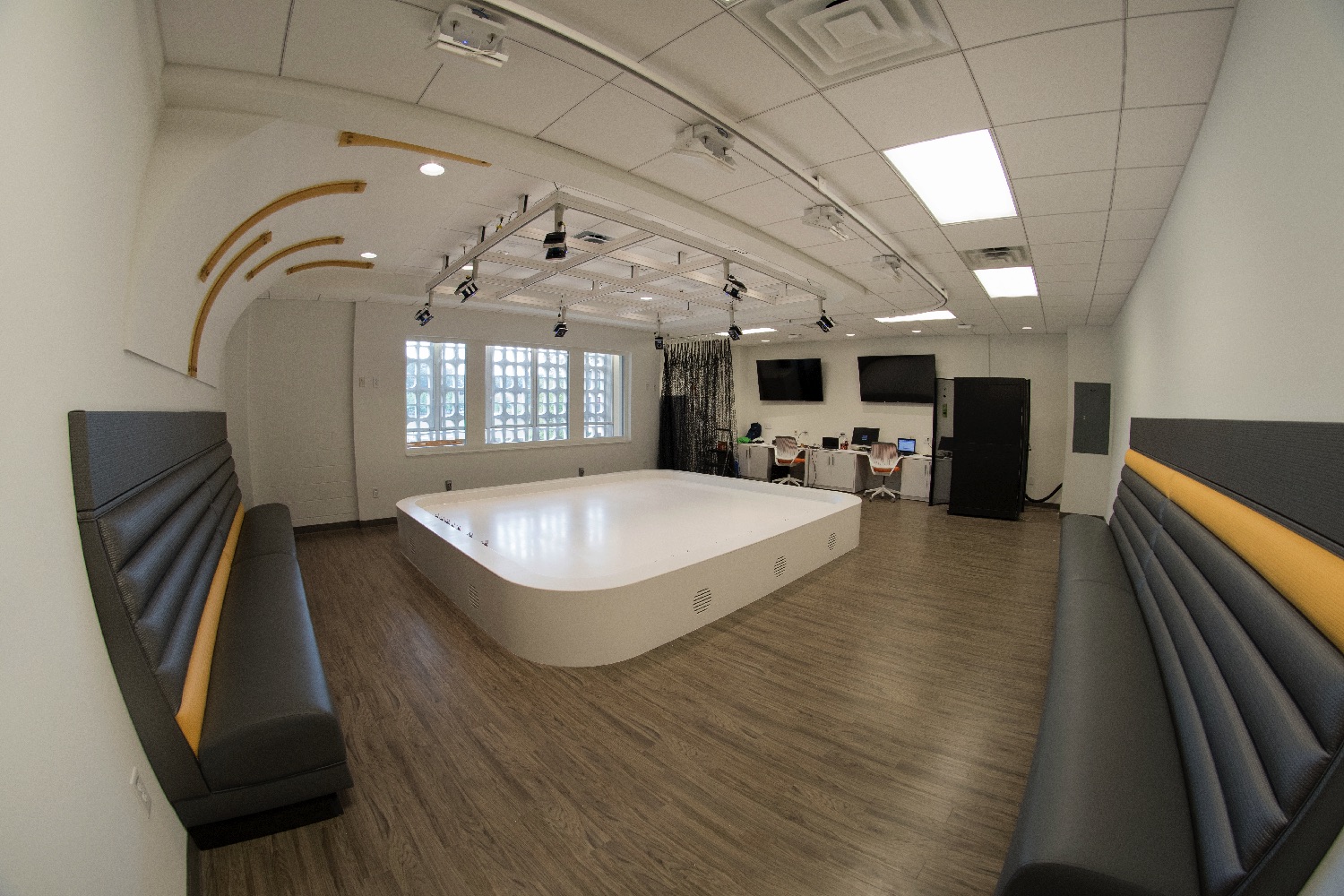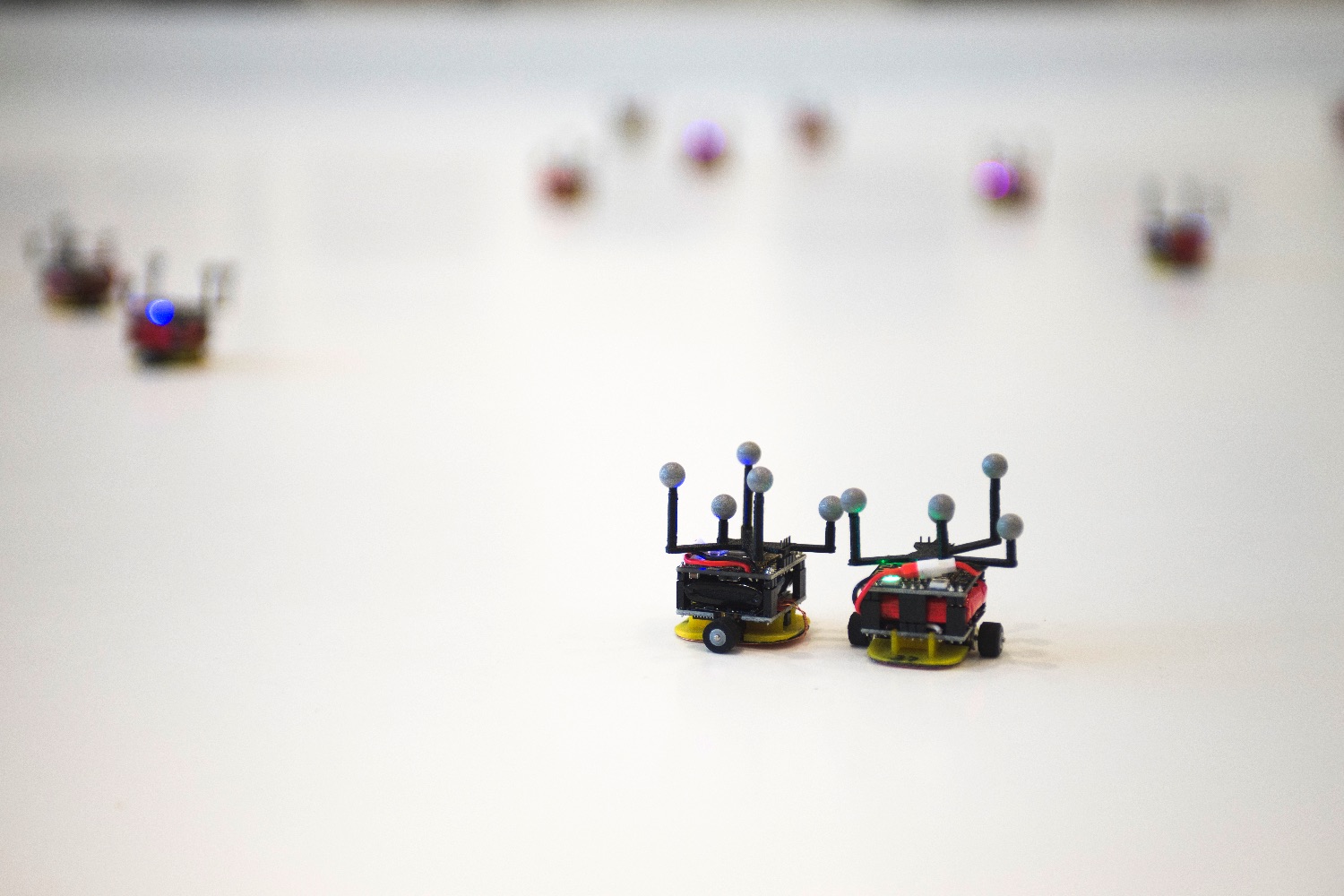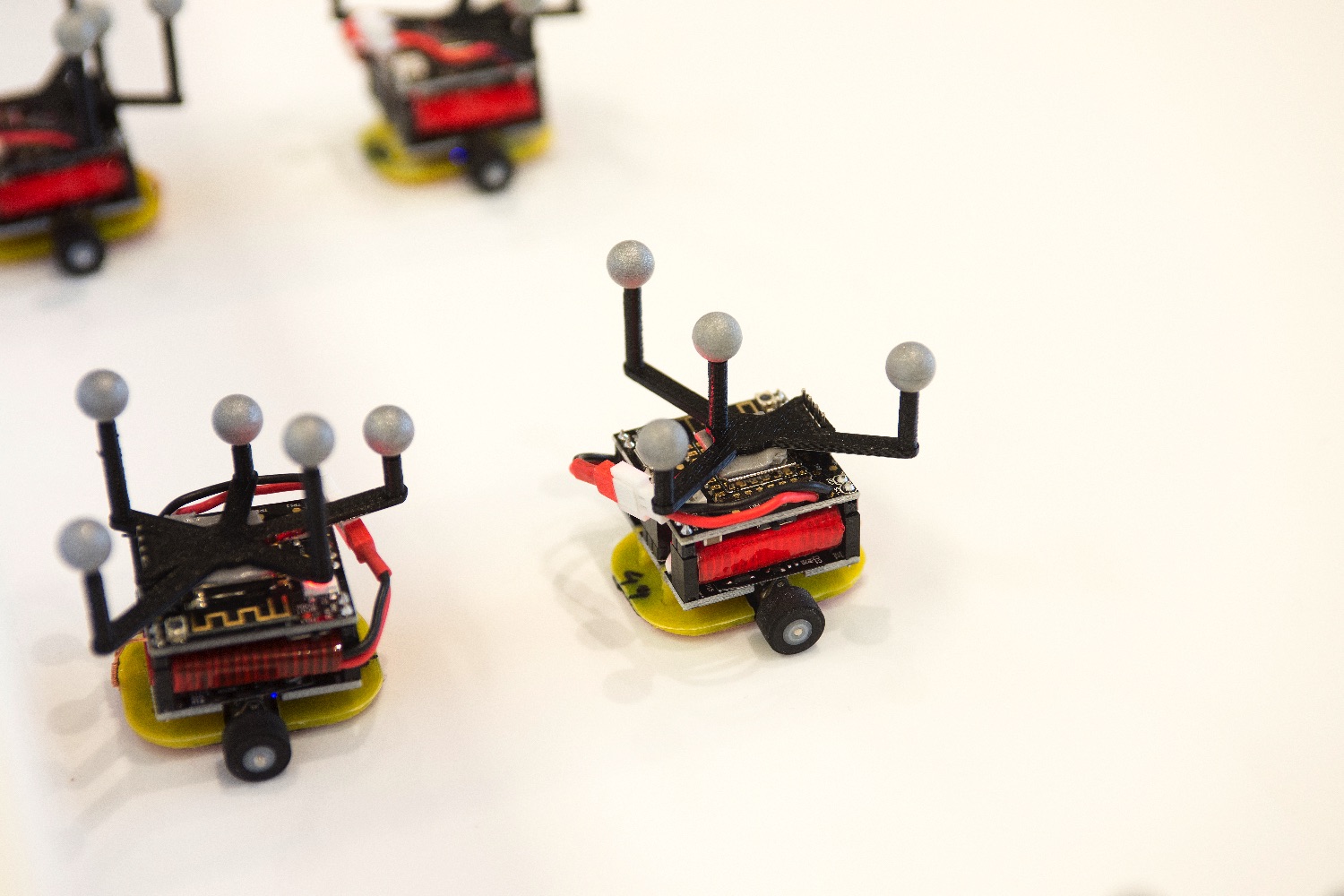All researchers need to do is to upload their code to the Robotarium website and watch it play out on a massive hockey rink-style arena, as filmed by motion capture cameras in the ceiling. Once an experiment has been carried out, researchers receive the video evidence and data they require, while the robot swarm autonomously returns to its charging points to await the next mission.
“The Robotarium is a remotely accessible swarm robotics lab populated with close to 100 robots: a mixture of wheeled ground robots and aerial drones,” Dr. Sean Wilson, a postdoctoral scholar overseeing the day-to-day operations of the facility, told Digital Trends. “It is designed to support a large set of research questions about how one can coordinate the behaviors of large teams of robots so that, together, they can solve problems they could not solve by themselves.”
The Robotarium cost $2.5 million to develop and was funded through an endowment from the National Science Foundation (NSF) and Office of Naval Research. Georgia Tech opened a miniature prototype, scaled-down version of the lab with a maximum of 30 robots a little over a year ago, and has used the knowledge they gathered from it to develop this full-sized version. It will have its grand opening on Tuesday.
“This is exciting because it fundamentally changes how we think about research infrastructure,” Dr. Magnus Egerstedt, professor and executive director for the Institute for Robotics and Intelligent Machines at Georgia Tech, told us. “No longer do you need to be an extremely well-funded research lab to get access to a world-class research facility. Also, we’re talking about swarms of robots — that’s super exciting in its own right! Who hasn’t looked at flocks of birds or schools of fish with awe? Well, now one can experience that with robots instead.”
Between this and the kinds of do-it-yourself home robotics projects we are starting to see hit the market, kids these days don’t know how lucky they are.








